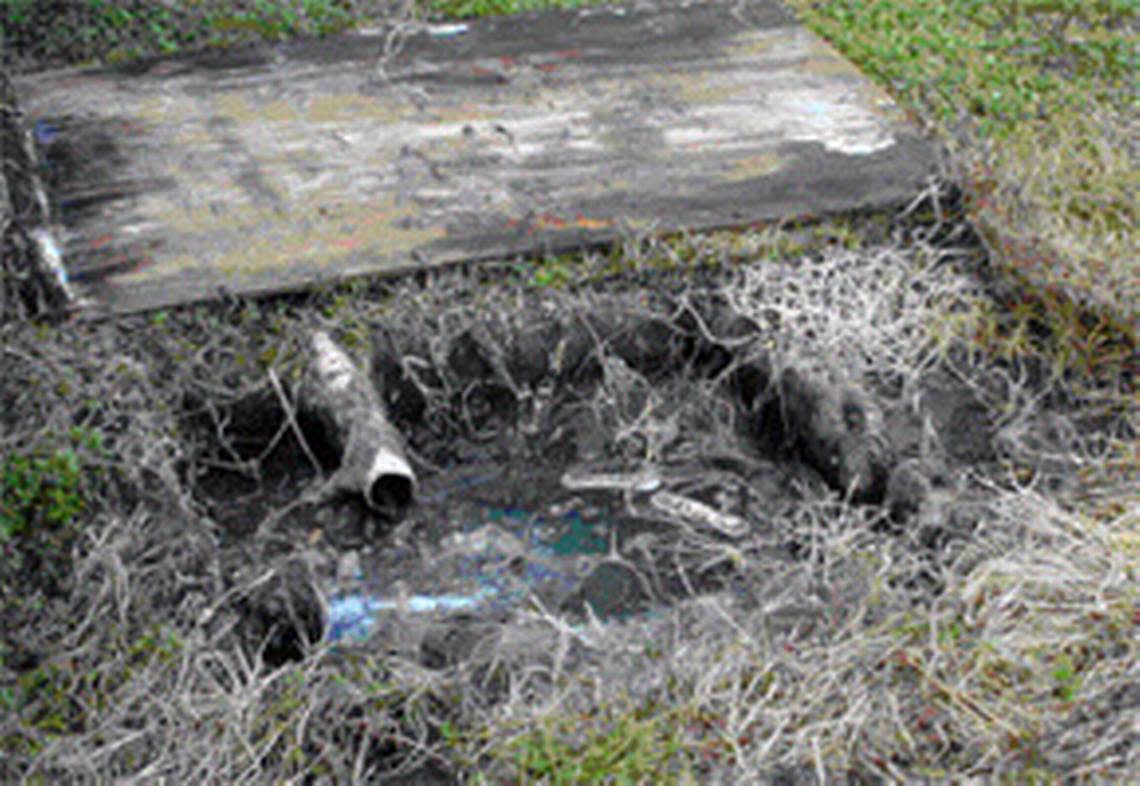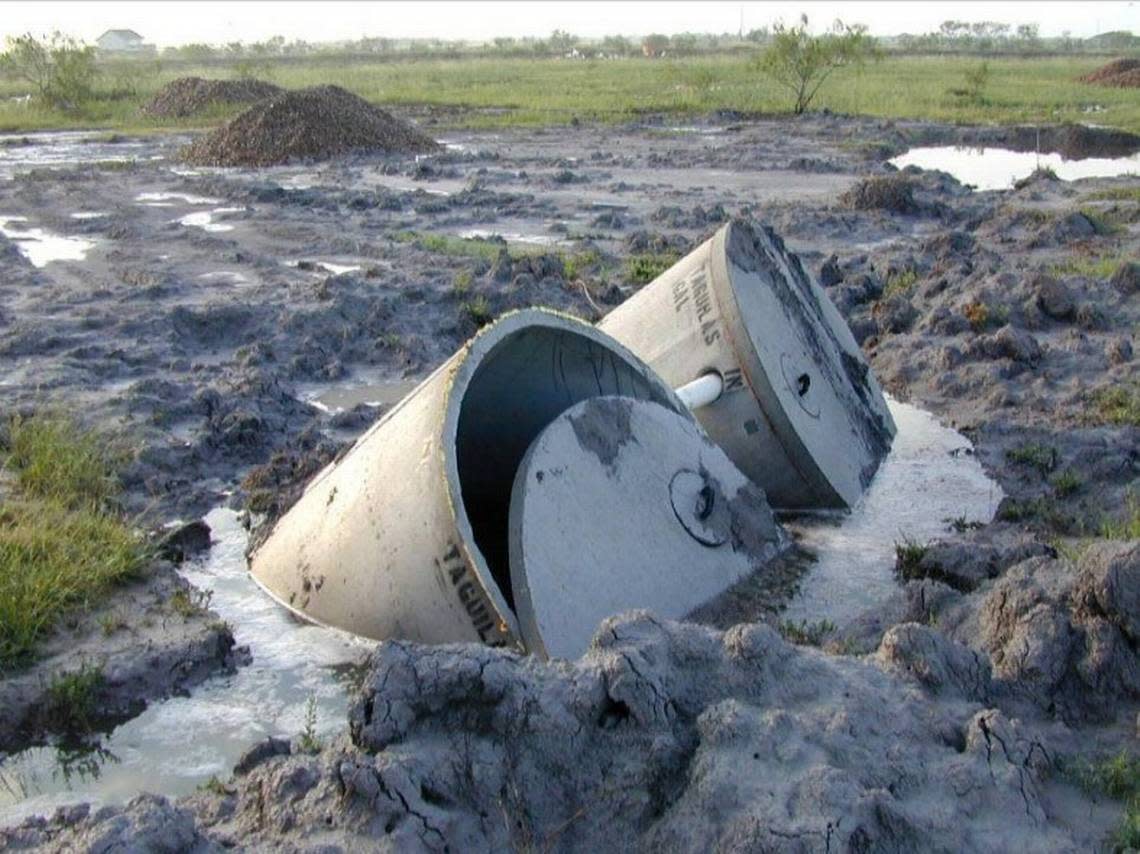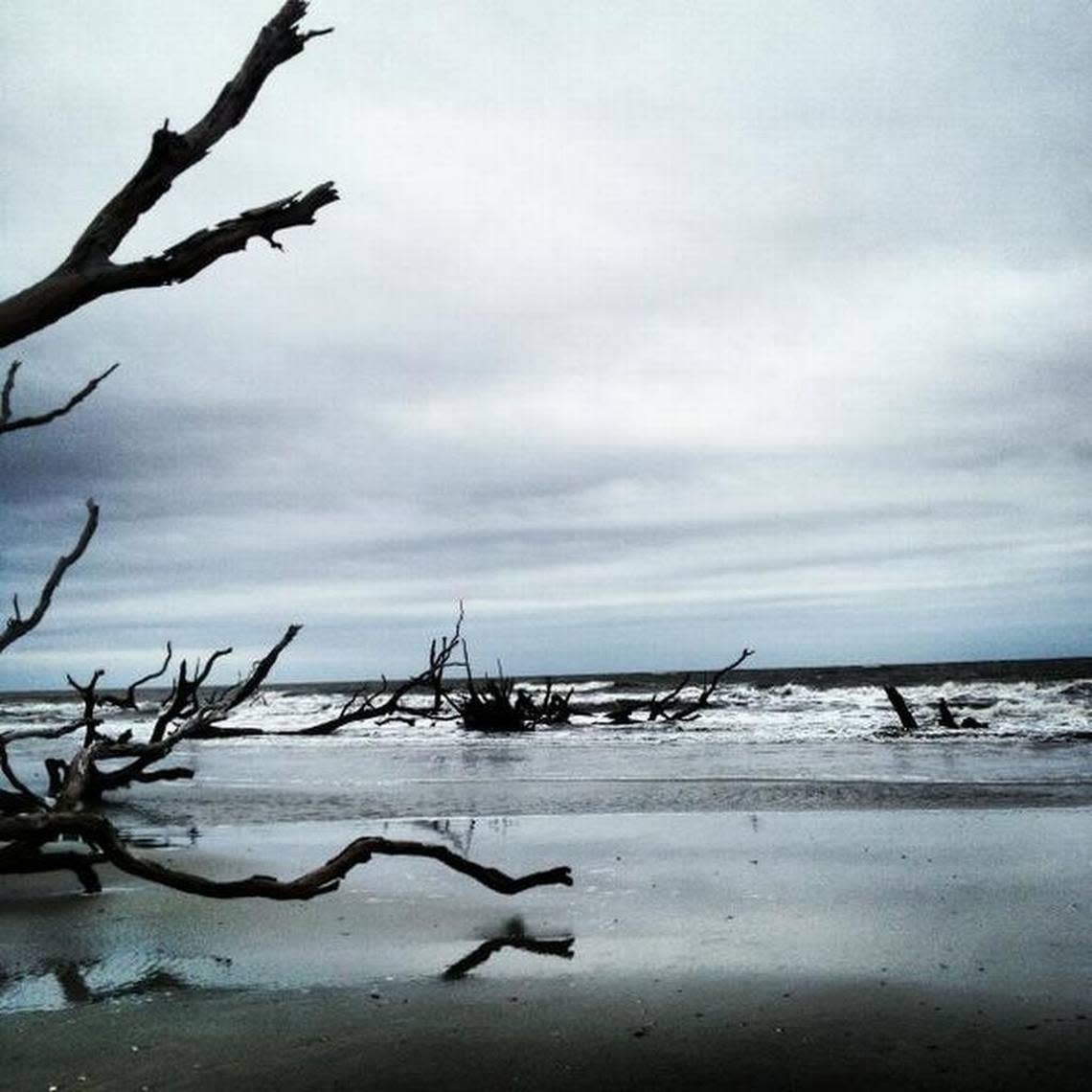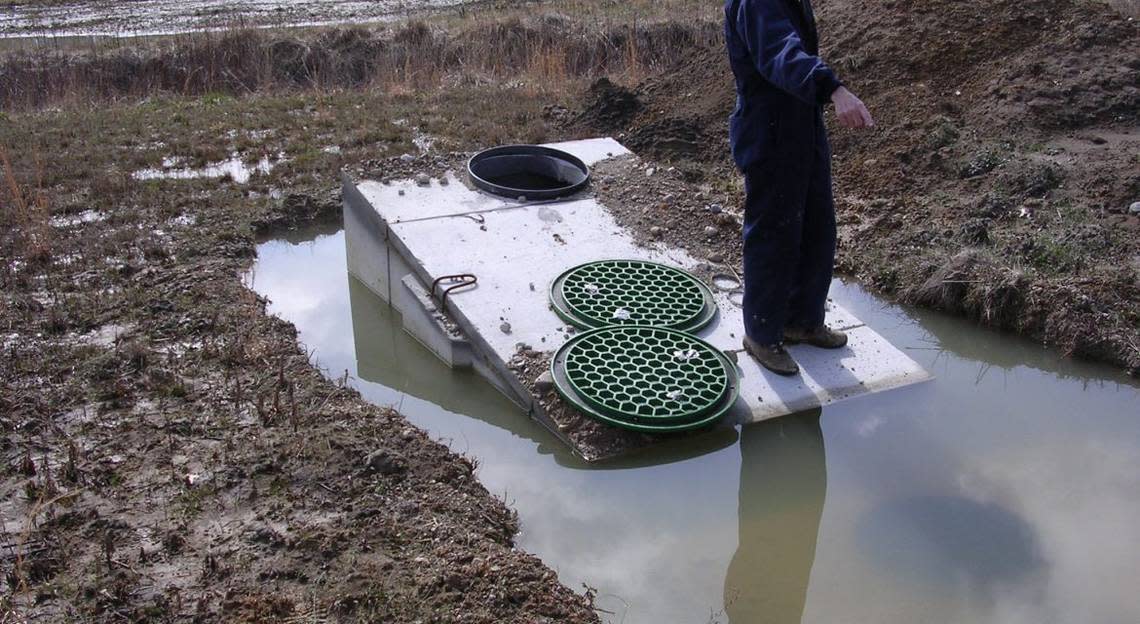Leaking sewage a threat to SC coast; state agency isn’t doing its job, suit says
In a lightly populated area of northern Charleston County, developers are planning two major projects that could bring hundreds of new homes to the doorstep of the Cape Romain National Wildlife Refuge.
But unlike many development projects, the new communities will rely on septic tanks to dispose of sewage, a potentially risky process in the marshy, low-lying ground of South Carolina’s Lowcountry.
It’s a major concern because of the threat septic tanks present to creeks, groundwater and public health — and because the state’s environmental protection agency isn’t looking carefully enough at whether they will fail.
That’s the assessment of three environmental organizations, which have filed a lawsuit seeking to tighten South Carolina’s oversight of new septic tanks in vulnerable coastal areas.
The Nov. 10 suit against the S.C. Department of Health and Environmental Control, filed in state court, is an effort to force DHEC to use the state’s coastal management law to review requests for septic tanks. The state doesn’t apply the coastal law now, the lawsuit says.
DHEC now approves or denies septic tank requests under a law that specifically addresses the onsite wastewater systems. That program looks at factors like soil suitability and how close a septic tank is to a well, but it does not look broadly at how clusters of septic tanks might affect the overall coastal environment if they were to fail, environmentalists contend.
As opposed to the septic tank program, the coastal management law would allow DHEC to look specifically at the cumulative impact of how individual permits could affect the environment near beaches, salt marshes and estuaries, attorney Amy Armstrong said. That would include the potential effects on coastal wildlife.
The agency’s historic failure to apply the coastal law has allowed scores of septic systems to pollute the coastal environment of South Carolina, some of the Lowcountry’s leading environmental groups say.
Failing and poorly sited septic tanks, for instance, have contaminated rivers and streams in areas that developed years ago, including Shem Creek, James Island Creek and Filbin Creek in Charleston County, the suit says.
It’s a long-standing problem in South Carolina that’s been heightened by climate change and rising seas that threaten to wash out septic tanks, environmentalists say. The least the state can do is use its existing powers to carefully review new septic tank permits as growth pressure continues, Armstrong said.
The lawsuit is “asking the agency to consider things that are not being looked at,’’ she said. “Sea level rise is a key component of that. Every major coastal community in the country, including Charleston, Beaufort and Myrtle Beach, is looking at how to adapt to sea-level rise.’’
In a recent news release, Charleston Waterkeeper director Andrew Wunderley called dense clusters of septic tanks “a menace for our coastal waterways. DHEC must do a better job of making sure that septic tanks don’t harm our coastal waterways and water quality.”

Swelling water, hidden germs
DHEC officials declined to comment on the lawsuit, but said existing state law adequately protects the environment from septic tank pollution.
Septic tanks work fine if they are installed on the proper landscape and maintained, regulators say.
These tanks, which serve single homes, are buried underground and accept waste from toilets, sinks and showers. The wastewater flows into the tanks, settles out, and then exits the tank into the soil. Bacteria in the tank provide some treatment for the waste before liquid flows into the earth, which filters out the rest of the contaminants.
But they often fail during floods and when the bottom of a tank is too close to groundwater or the tank is near a stream. In these cases, nearby creeks and groundwater can be contaminated with disease-carrying germs. A poorly maintained septic tank also can allow sewage to bubble to the surface of the ground, creating a health a hazard.
In contrast, public wastewater systems are typically large regional operations that pump sewage to treatment plants, where bacteria is filtered and reduced before wastewater is released into a nearby stream.
Poorly sited septic tanks have been found in many areas of the state, including places like Lake Murray.
But Armstrong, who heads the non-profit S.C. Environmental Law Project, said the coastal environment is particularly fragile, and plans for septic tanks need the tighter review that the coastal law provides in deciding permit requests.
Development in areas far inland, such as in Rock Hill near Charlotte, is often on higher ground than along the coast, Armstrong said. And septic tanks are generally known to work better on high ground than in soggy areas.
“If you want to build a 200-home residential subdivision in Rock Hill, and you want to build one in Awendaw, or Johns Island or anywhere on the coast, they are treated exactly the same, even though one is on much higher elevation,’’ she said.
A key concern is swelling groundwater levels, environmentalists say. Sea level rise and climate change are causing the water table to rise on parts of the south Atlantic coast, making the use of septic tanks more hazardous in some areas, according to a report last month by the Geological Society of America.
A researcher from East Carolina University recently documented rising groundwater levels along parts of the North Carolina Outer Banks. The study found homes in the Nags Head area that are less than 9 feet above sea level are likely to have more trouble with septic tanks.
While developers sometimes prefer public sewer lines to serve new construction, septic tanks are often cheaper to install and have been used for years to build projects when public sewers are not available.
It’s a trend that continues in South Carolina as the state grows. Statewide, permit applications for septic tanks have more than doubled since 2011.

The septic tank program processed 7,489 applications in the 2011-12 fiscal year, according to a recent DHEC budget request to the Legislature. But in the 2021-22 fiscal year, the number had risen to 18,204 - an increase of 243 percent, the department said in its budget request to the Legislature.
Department officials could not provide a breakdown for septic tanks in major coastal counties, but Armstrong and other environmentalists said the pressure to develop remote coastal areas on septic tanks is growing. The Awendaw area north of Charleston is a prime example, they say.
“Septic is becoming a much larger issue,’’ the Coastal Conservation League’s Emily Cedzo said. “For so long, it was seen as a default option .... in rural communities. Now, we’re seeing large developments use it.’’
Houses along island gateway
The lawsuit, filed by the Charleston Waterkeeper and the Coastal Conservation League through Armstrong’s legal group, asks the court to stop DHEC from issuing any more septic tank permits in the coastal counties unless the agency reviews whether they are appropriate under the coastal law.
According to the suit, at least two residential projects that will have as many as 453 homes total are planned for the Awendaw area near Cape Romain — and the developments will be built with septic tanks because public sewers are not available, the lawsuit said.
The areas to be developed are collectively on more than 400 acres near the refuge. The project of most concern is a planned 204-home development. It has raised the hackles of some Awendaw residents, who worry about congestion and encroaching sprawl, in addition to septic tanks being installed.
Representatives of the Pulte group, the project builder, were unavailable for comment. They have said they plan to require annual septic tank inspections, according to the Charleston newspaper, The Post and Courier.
Plans for the project, to be developed on what is known as the “White Tract,’’ call for homes to surround Bulls Island Road, the primary way tourists visiting the national wildlife refuge can reach its signature feature, Bulls Island.
Multiple houses would be built near the marsh and waterfront separating the mainland from Bulls Island, development plans show.
The Cape Romain National Wildlife Refuge is a more than 66,000-acre, area of mainland high ground, freshwater wetlands, salt marshes and coastal islands. About 29,000 acres are federally designated wilderness areas that are given special protection because of their environmental significance.
Nearly 300 species of birds call the refuge home, including bald eagles and ospreys. Sea turtles are attracted to Cape Romain’s unspoiled island beaches to nest. The area is home to Bulls Bay oysters, widely harvested for sale as seafood in markets and restaurants.
Eight threatened or endangered species live within 2 miles of the project site, according to a February 2022 consulting report on the project.

Backlogs and expensive homes
The lawsuit, in addition to trying to force DHEC to look at septic tanks under the coastal law, also asks a court to make it easier for the public to learn about proposed septic tanks. It says the law governing septic tanks does not require DHEC to notify the public about individual tank requests. The suit seeks to require public notice.
Mark Nix, who directs the Homebuilders Association of South Carolina, was skeptical of the lawsuit.
He said requiring septic tanks to be reviewed under the coastal law could increase costs and delays in people getting approvals. DHEC already has a backlog and is taking months to give final approval to septic tank permit requests, he said.
“You would be driving up the cost of housing but also rentals,’’ he said. “It has a ripple impact on the entire economic fiber of the community.’’
DHEC concedes that its septic tank program needs improvement. The agency is lacking staff to assess requests for new septic tanks as demand increases. It is taking DHEC about 64 days to process septic tank permits today, but the agency’s goal is 15 days, the budget request said.
DHEC’s budget request for the next fiscal year seeks an additional $1.4 million to cover a shortfall in the struggling program. DHEC said it did not know how many septic tanks exist in South Carolina. Despite the need for money and people, the agency said it believes current rules and regulations overseeing septic tanks adequately protect the environment.
State law “establishes a comprehensive framework of system standards, permit procedures, minimum conditions, and other requirements for the permitting of onsite wastewater systems,’’ the agency’s Laura Renwick said in an email to The State.
“These regulatory requirements include a range of size and material specifications, minimum site conditions, setbacks, and other provisions designed to protect people’s health and the environment from potential wastewater discharges.’’
Concerns about septic tank pollution are nothing new in South Carolina, a state criticized for decades over what some say is a lack of oversight. In the 1990s, the S.C. Environmental Law Project’s now deceased founder, Jimmy Chandler, criticized the program as being among the worst in the country. DHEC says the rules have been updated since then.

